May you enjoy the treasures of animals natural habitat in 2015 – Photography by: Jeff Pond. The American Bald Eagle is a national treasure- literally, as they roam most of the North American continent yet no where else in the entire world. A true all-American, it’s no coincidence that it was chosen as our national symbol. From Alaska to Alabama, you’ll find them flying about. You may have to look hard, though, as they’re endangered in 43 of the lower 48 states, including Washington & Oregon- the lower Pacific Northwest. Alaska is estimated to have 40,000 of them in the wild, such as the ones seen in this article, photographed by Jeff Pond.
Due to their endangered status, it’s illegal to handle them in the wild in any way. If you could, however, you’d find them very intimidating to say the least. Male bald eagles tend to measure 3ft long from head to tail, weigh around 10 pounds, and have a wingspan of ~6.5ft. The females of the species are much larger, often reaching 14 pounds with a 8ft wingspan. All huge, dark eyes, a peerlessly strong yellow beak, and giant black talons. If you were to encounter some of their young in the wild, you may need to look extra close- their white head and tail feathers that make them so instantly recognizable don’t actually come in until year 4 or 5.
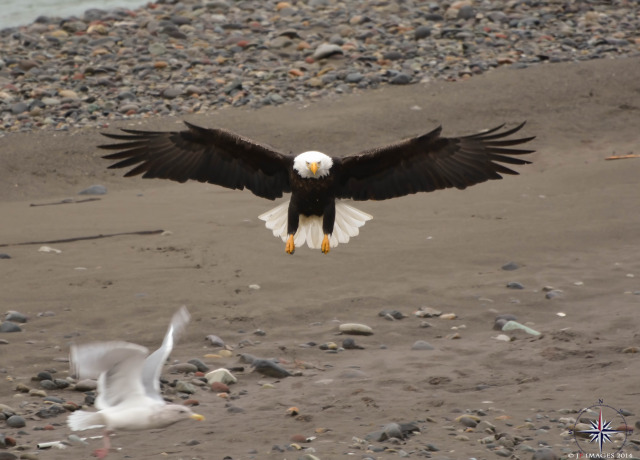 Photography by Jeff Pond
Photography by Jeff Pond
Despite this length of time before “going bald,” eagles still have plenty of time left on their clock. They often live 30 years or more in the wild, and captive birds can live even beyond that. In the wild, however, the birds will mate for life- building gigantic nests at the top of trees near lakes, rivers, and similar wetland areas that provide necessary sustenance. These nests really can be something, with widths of up to ten feet and weights as much as one standard Ton. Oddly, despite their tendency to roam, their final nesting will usually be within a 100 mile distance to where they were raised.
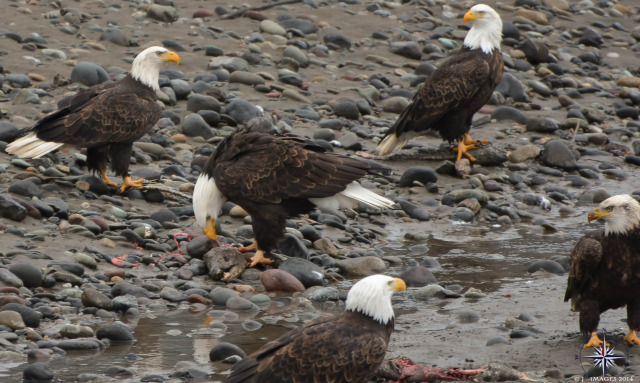 Photography by Jeff Pond
Photography by Jeff Pond
After nesting and mating, bald eagles generally lay two to three eggs yearly. These eggs will hatch after about 35 days, and can generally be expected to be flying within 3 months. A month after that, they’re generally on their own- and only about half survive the critical first year due to lacking food, inclement weather, and of course, humans being humans. Although we often associate the bird with majestically pulling such as salmon out of streams, they are birds of prey and their diet reflects this. Fish is their primary source, but they’re more than willing to go after whatever it takes to get fed- whether that be rodents, snakes, carrion, and even other birds like ducks. In winter, they generally migrate south to wetland areas where fish and other prey are readily available.
Despite their status as a national treasure and being endangered, humans have been the only consistent animal threat to the species. This is in large part due to how few natural enemies they have in the wild, and how many they have (or had) in the modernized world. While things are almost assuredly better today, they were often shot by farmers and ranchers who saw them as a threat to their livestock- along with other raptors & marauders like wolves and hawks.Deforestation of otherwise untouched land has been a continuing issue as well. Furthermore, use of DDT as a pesticide contaminated much of their food sources- and things were once so bad in the 1960s that it was believed there were only 450 mate pairs in the lower 48 states. That’s a rare bird- and a complete tragedy.
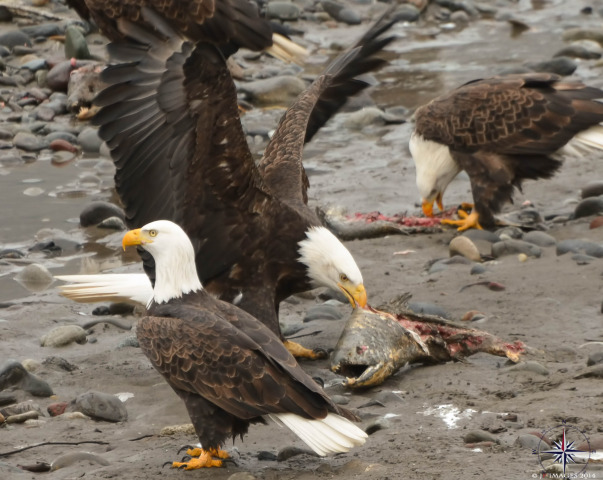 Photography by Jeff Pond
Photography by Jeff Pond
That’s why in 1940, Congress decided that the national bird was threatened with extinction. That’s when Congress passed the Bald Eagle Protection Act, which made just about any interaction with the birds illegal. Owning one isn’t, so long as you can get a permit. Soon it became a huge part of the national agenda to keep our eagles flying, and the act would expand via the 1973 Endangered Species Act.
The Bald Eagle itself didn’t become the national symbol right away, and instead became one in 1782 after the Great Seal of the United States was chosen. This symbol shows an eagle, wings spread, with a 13-stripe shield on the chest that represents the original colonies. The talons clutch an olive branch and a bundle of arrows, which denote the power of peace & war which is exclusively vested in Congress.
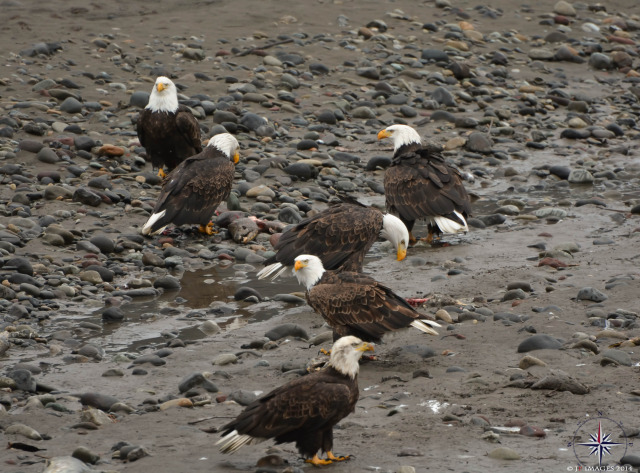 Photography by Jeff Pond
Photography by Jeff Pond
Eagles are truly beautiful creatures, and seeing them in the wild can often be just as easy as taking a trip up north to Alaska. Our 49th state is home to some of the largest areas of virgin wilderness that still contains a large number of these birds of prey, and the birds seen here were migrating south from Canada to Washington along the Nooksack river. The river is located in the very northwest of Washington state right near the borders of Canada and Alaska, and Jeff Pond’s diligence in taking the time to take such great pictures is greatly appreciated. Thank you, Jeff!
If you’d like to get ahold of Jeff Pond or see more of his images:
 Jeff Pond on Facebook
Jeff Pond on Facebook
More current and updated photos on Jeff Pond’s Flickr.
Email: pondo98136@yahoo.com
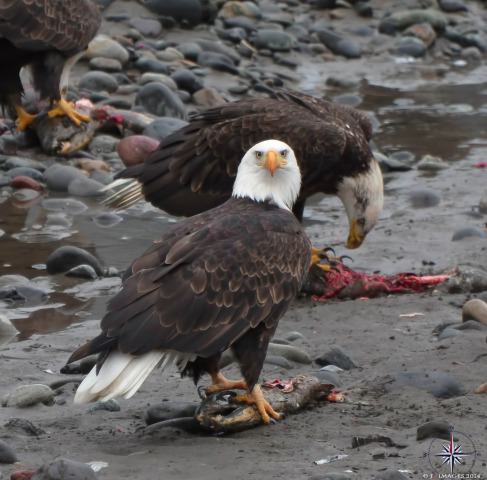 Photography by Jeff Pond
Photography by Jeff Pond









